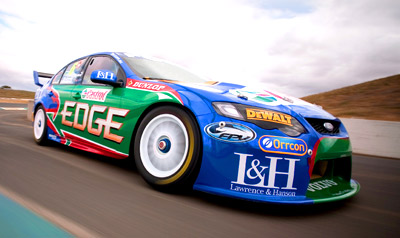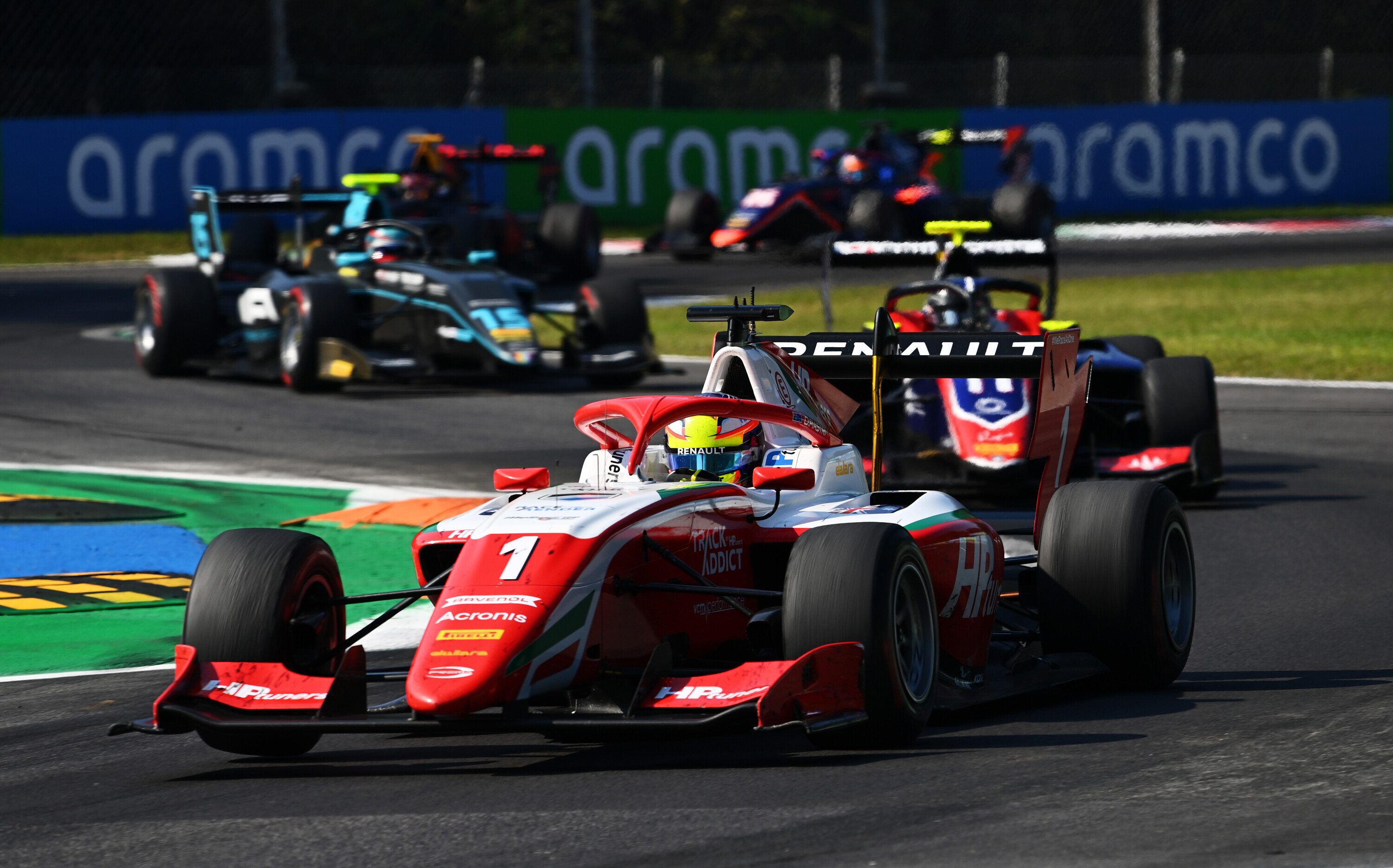The FPR V8 Supercar totally out-classes the HRT ride car on a hot lap of Calder Park. Before either V8 Supercar had turned a wheel in anger, I asked Garth Tander and the boys from HRT what the performance difference between the ride car and the FPR racer was likely to be. The consensus view was: “about a second per lap” – a frank and on-the-money appraisal as things turned out.
So, what aspect of ‘real’ V8 Supercar performance do you miss out on, from the passenger’s seat of the HRT ride car? The answer is, essentially, that the FPR car is a braking virtuoso, while the HRT ride car is merely impressive.Off the end of the main straight, the FPR car starts its braking 20 metres closer to turn one. And, during those 20 metres, you have to ask yourself what it spends its time doing. The answer is, of course, accelerating – increasing speed. When Richards hits the anchors in the FPR racer, he’s doing 255km/h. At this exact same point on the track, the HRT ride car has already wiped 5km/h from its maximum speed of 246km/h. If you stare at the overlaid straight-line acceleration graphs long enough, you actually see the FPR Supercar carve up the HRT ride car under brakes.Then, still on the straight, the FPR racer goes on to brake a lot harder. It gets to its peak brake application (1.3G) early, and at this point the HRT car is managing ‘only’ 0.85G. Around 120 metres later, the FPR car is still pulling 1.2Gs under brakes at 147km/h – at which point Richards starts easing off the brakes in the set-up for turn one; the HRT is managing 0.7G at 139km/h, and Tander won’t start easing off for another 30 metres.The braking duel into turn one repeats itself – albeit not on such a grand scale – off the end of the back straight into dogleg two, highlighting the two places on the track where the FPR car has a real edge.Elsewhere, its gains are incremental. The two cars are very close on corner entry and exit speeds around the entire circuit. At one point on the way into turn one, for example, the FPR racer is carrying 116.5km/h while the HRT carries 117.3km/h. On the way out, the FPR car is doing 88.2km/h at the point where the HRT car is level-pegging at 88.3km/h. However, at the apexes, the FPR racer carries slightly more speed (and therefore more lateral G) in each of the turns.For 600 metres of the main straight, the two Supercars really are nose-to-nose. At the second-third gearchange on the way out of turn two, the FPR car pulls 122.0km/h while the HRT car, hypothetically beside it, manages 121.1km/h. Then, 350 metres before the entry to turn one, the FPR car starts to inch ahead. One hundred metres after that, Tander in the HRT car hits the anchors; Richards won’t for another 20 metres, and the FPR car gallops away.This braking performance adds up to a 1.2-second per lap difference in the favour of the FPR. That’s a two percent advantage to the Blue Oval racer, a gap that the HRT car lacks the ability to close. Price $500,000 (est) Engine V8 (900), ohv, 16v Capacity less than 5000cc Bore/stroke team specific Compression 10.0:1 Power 470kW@7250rpm Torque 630Nm@5750rpm Transmission 6-speed manual Kerb weight 1355kg Power-to-weight 347kW/tonne Tyres 17-inch Dunlop racing slick on 11-inch wide magnesium alloy





